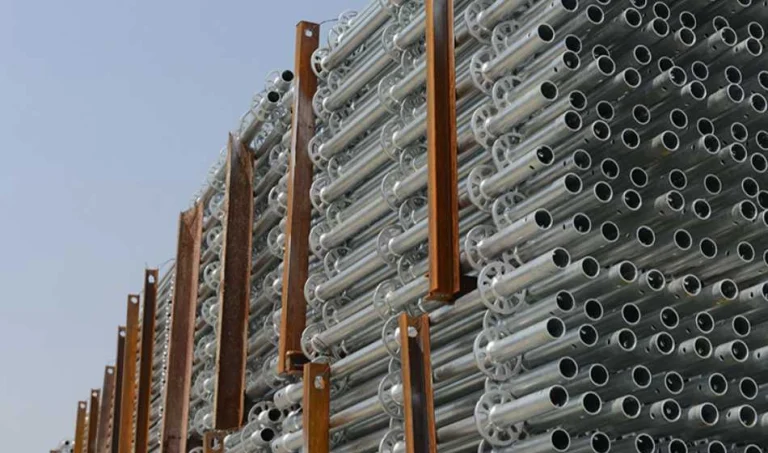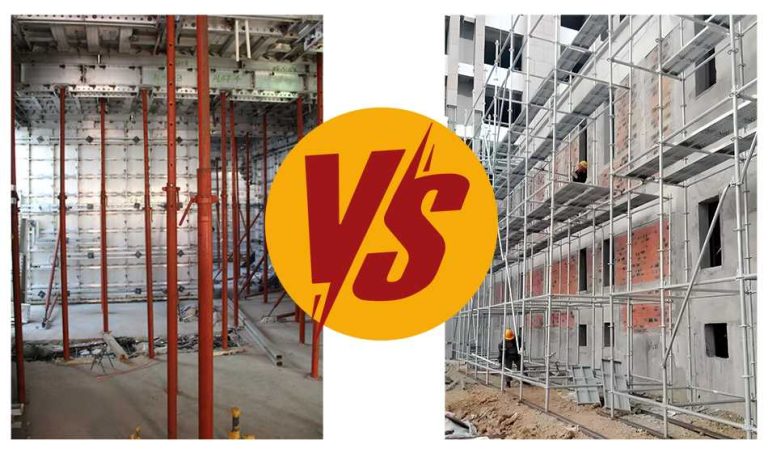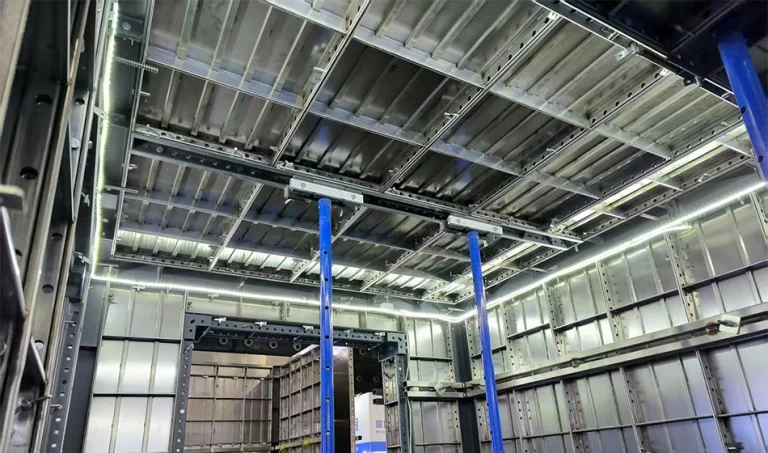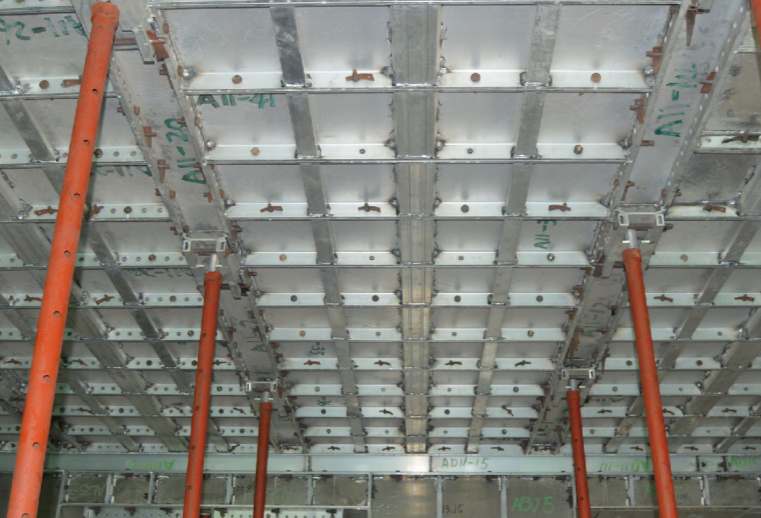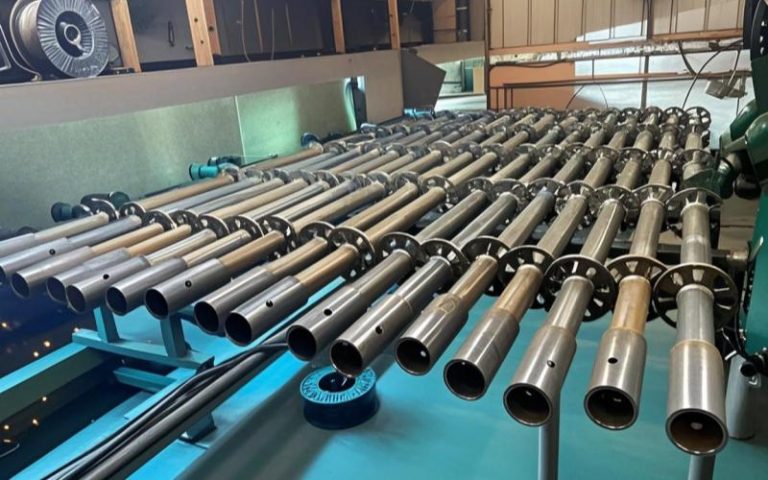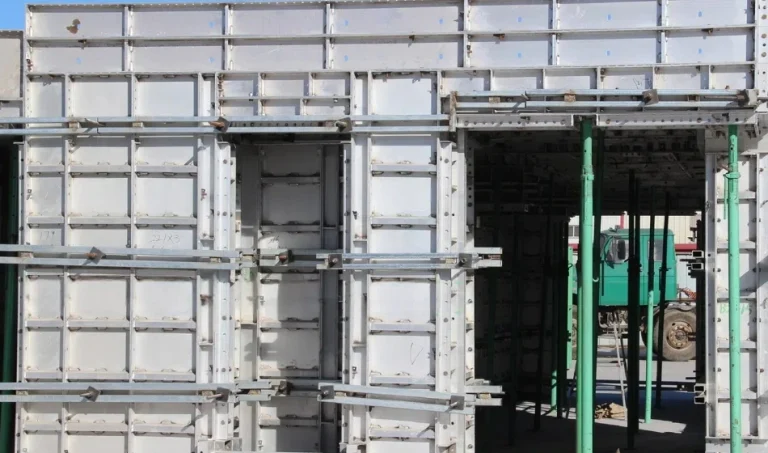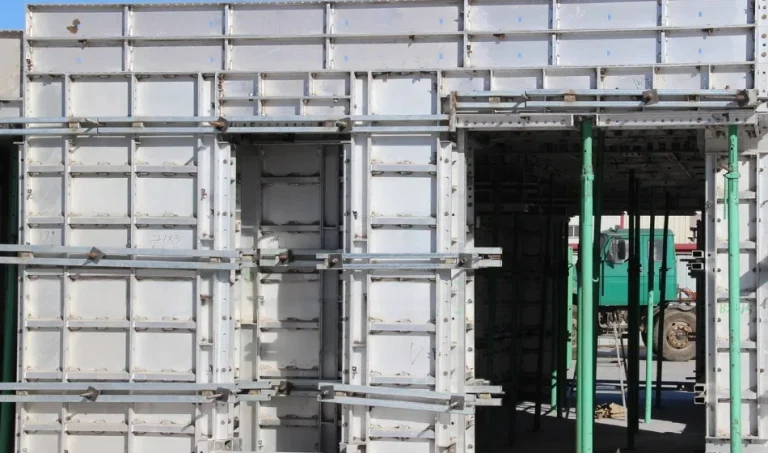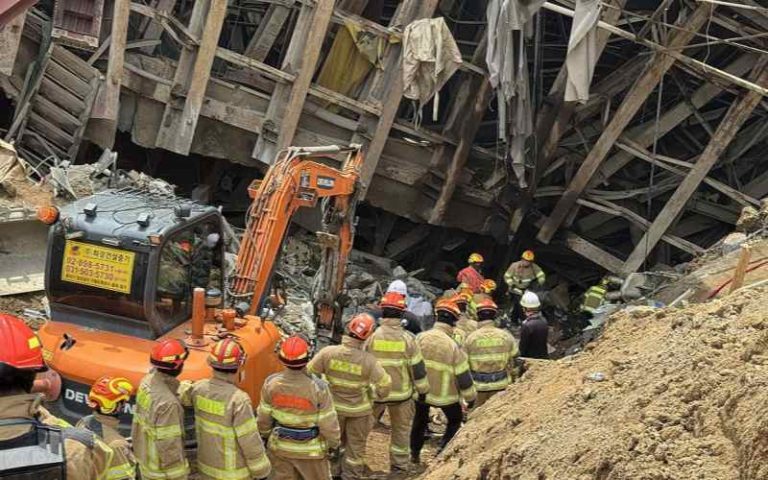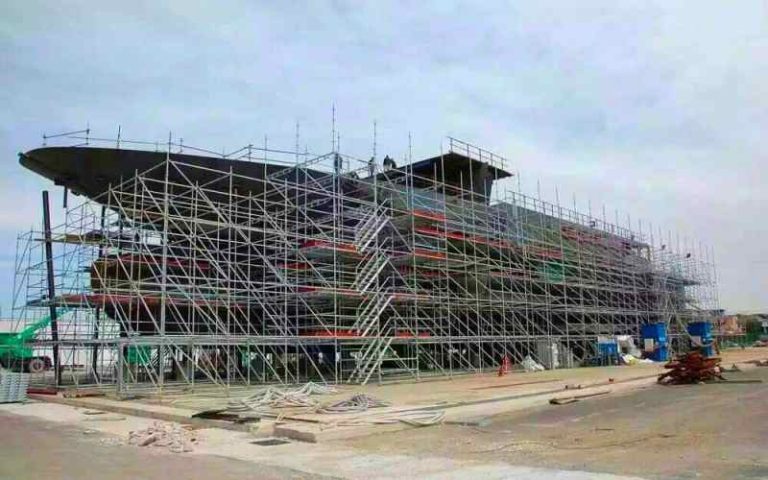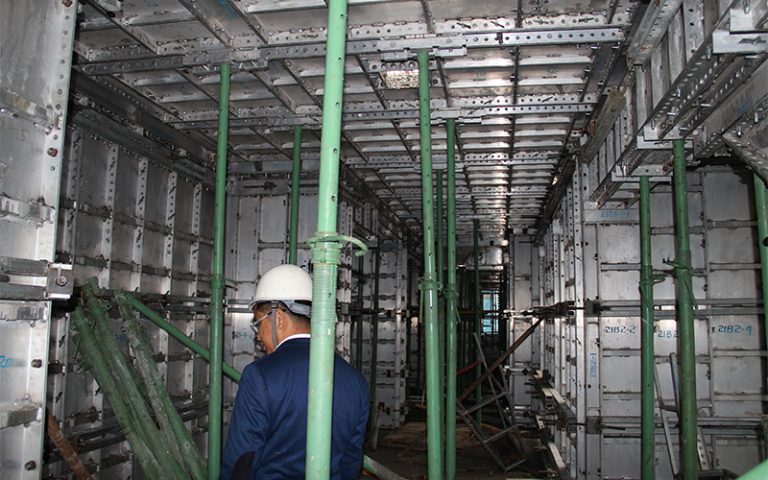On April 11, 2025, the ground on the Shinansan Line construction site in Jangjung-dong, Gyeonggi Province, South Korea, fell apart terribly. The fall destroyed several businesses and roadways on the ground level, and one person is still missing. The disaster has raised serious concerns about building scaffolding safety and shows the importance of good safety management processes on construction sites.
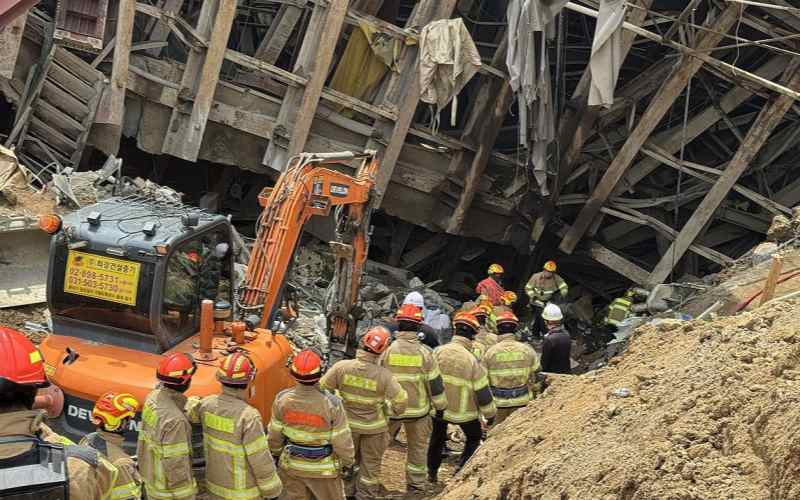
Why It’s Important to Manage Safety on Construction Sites
Scaffolding is a temporary structure vital to the construction process since it supports workers and materials. But if scaffolding is poorly designed, built, or maintained, it could collapse. The collapse in Gyeonggi Province shows how important it is to have rigorous safety rules on construction projects. Construction businesses must use complete safety management systems to keep all activities and personnel safe.
The difficulty of geological conditions
The complex geological conditions at the site where the building took place were one of the key reasons why the Gyeonggi Province fell apart. Building in areas with complex geology requires detailed geotechnical surveys to understand the conditions below the surface fully. This means finding hazards like unstable ground, groundwater difficulties, and buried utilities. Engineers may design support systems correctly and take steps to lower hazards using advanced geotechnical investigation methods like soil sampling and geophysical surveys. These methods can give them useful information about the state of the ground.
Improving the standards for designing and building scaffolding
The event also shows how important it is to follow the rules for designing and building scaffolding exactly. People who are good at it must design scaffolding that takes into account the load, stability, and type of building job. It is also important to use high-quality materials and have regular inspections to ensure the structure stays strong. There are severe rules and legislation in South Korea, as well as in most other nations, that must be observed when using scaffolding. The accident in Gyeonggi Province, however, shows that these criteria may not always be followed or enforced correctly.
Why Modular Scaffolding Systems Are the Best Choice for Rescue and Escape Operations
Choosing the right scaffolding system is essential when building in areas with complicated geology or high risk. Because of their improved design and usefulness, modular scaffolding systems, such as ringlock scaffolding, have become the best choice for escape and rescue operations.
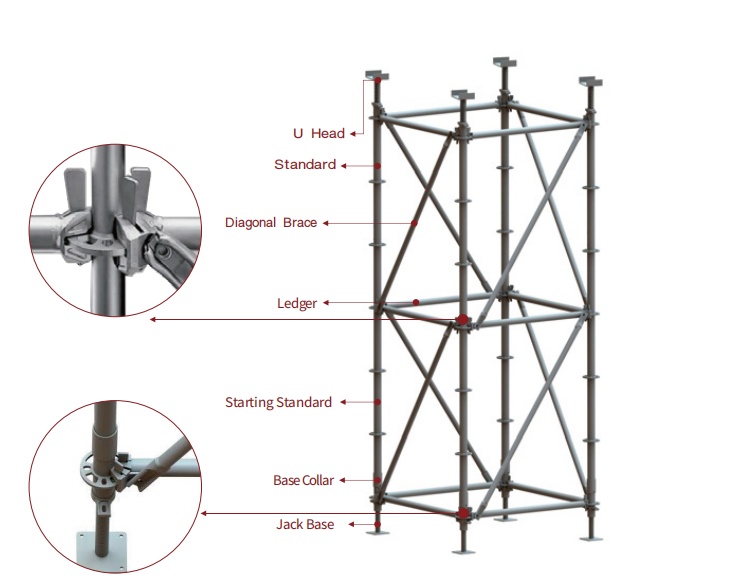
Here are three of the most essential benefits of modular scaffolding systems:
Advantage 1: Quick assembly and disassembly without tools (plug-in nodes vs. tightening bolts)
When there is an emergency, timing is critical. When using traditional scaffolding, you usually need equipment, such as bolt attaching, to put it up and take it apart. This takes a lot of time and is more likely to go wrong when you are stressed. Plug-in nodes on modular scaffolding systems make assembling and taking apart without tools easy. This design reduces the time it takes to put things together and take them apart, making work more efficient. In case of an accident, workers may immediately remove pieces of the scaffolding to create escape routes and make it easier for rescuers to get to people, lowering the danger of injuries and property damage.
Advantage 2: Modular unit design (taking apart some parts doesn’t change the overall stability)
The fact that ringlock scaffolding systems have modular units is another big plus. This design lets you remove pieces of the scaffolding without making the whole thing less stable. If you only partially remove the scaffolding, it may lose its overall stability and potentially lead to further collapse. But each piece of ringlock scaffolding is its thing, so taking certain parts apart doesn’t hurt the others. This structure makes building easier and ensures rescue workers may swiftly and safely remove parts of the scaffolding without weakening the whole structure. This makes the work environment safer for rescue operations.
Advantage 3: The built-in smart sensors allow flexibility in adapting to real-time load monitoring.
Real-time monitoring systems are increasingly utilised in the construction industry to enhance safety.
Improving training and awareness
Training and making construction workers aware of the dangers of scaffolding is another key way to stop accidents. Workers need to know how to operate and care for scaffolding properly and how to spot dangers. Safety training and emergency drills often teach workers how to act in situations. Also, creating a safety culture on construction sites where workers may report unsafe circumstances without fear of punishment can significantly lower the risk of an accident.
Using technology to make things safer
Innovative technologies enable the enhancement of safety on building sites through various creative methods. For instance, real-time monitoring systems can continuously monitor the health of scaffolding and ground conditions. Sensors can pick up on load, movement, or soil pressure changes and let site managers know about possible problems before accidents occur. Virtual reality (VR) and augmented reality (AR) can also be used for training, letting personnel safely deal with and respond to fake dangerous circumstances.
Pemikiran terakhir
The scaffolding that fell at the construction site for the subway station in Gyeonggi Province, South Korea, is a clear example of how dangerous construction can be. It shows the importance of complete safety management plans that include detailed geological assessments, rigorous adherence to scaffolding design and construction rules, more training and awareness for workers, and cutting-edge technological solutions. The best choice for escape and rescue situations is modular scaffold systems. They are easy to put together and take apart without tools, have a modular component design, and can be used to monitor loads in real-time. The construction industry may work to make the workplace safer and reduce the number of scaffolding failures by following this lesson and these tips.
Is your construction site still using old scaffolding?
➡ Download our free scaffolding catalog: “How our Scaffolding System Improves Emergency Response”
➡ Book a demo to see how modular scaffolding works in crisis scenarios.

